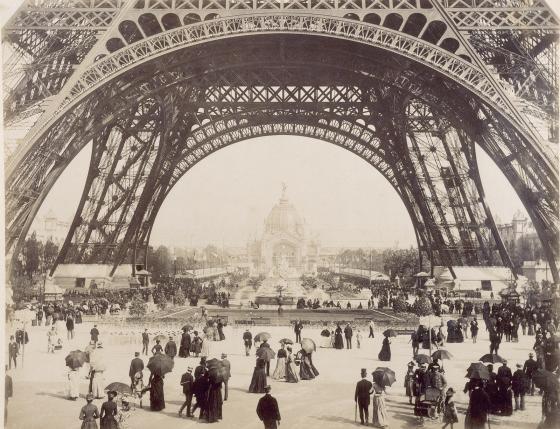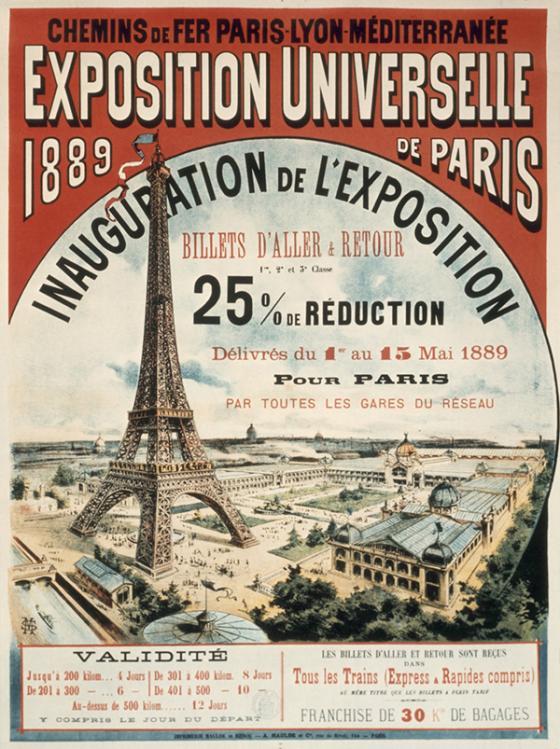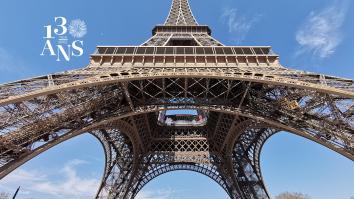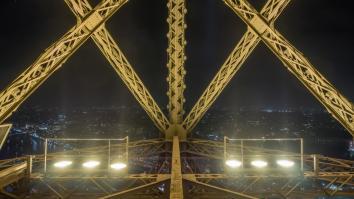The Tower as the highlight of the 1889 World Exhibition
Friday 17 May 2019
Modified the 18/05/19
The 1889 World Exhibition is certainly not the first to be held in France. The London Great Exhibition of 1851, the first of its kind, had set the bar very high in regards to the objects and artifacts exhibited as well as their surroundings, with the famous completely glass-coated Crystal Palace. Paris had responded to this feat as early as 1855, erecting a cast iron and glass palace on the gardens of the Champs-Élysées to hold its first World’s Fair. In 1867, the Second Empire consequently presented a much larger exhibition comprised of an immense building expanding the full Champ de Mars and surrounded by pavilions and factories. In 1878, the young French Republic sought to demonstrate its comparable mastery to former monarchies by erecting large metal-framed buildings.
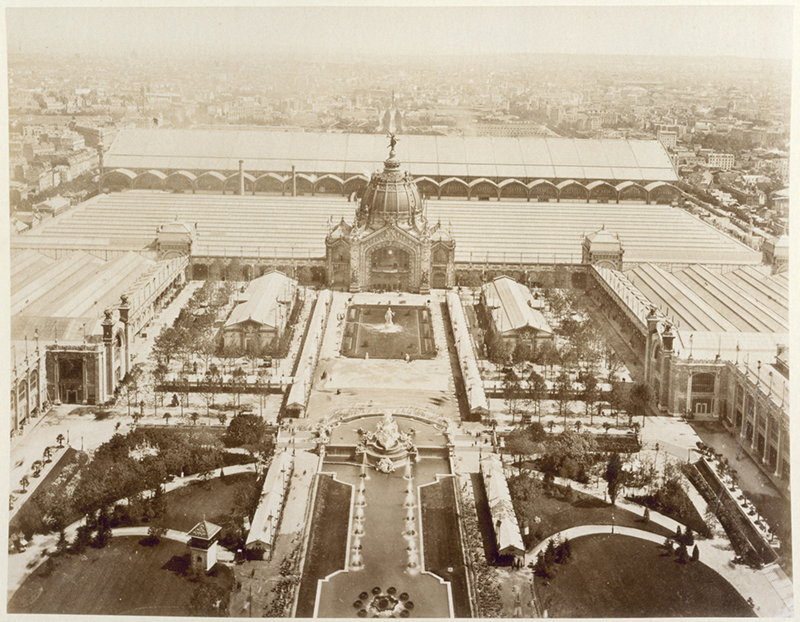
The hundredth anniversary of the French Revolution
The idea of a new world exhibition emerges in the early 1880s as a means to revive the economy through major state-led works while proposing a project to unify the nation, establish dynamism, and contribute to a collective political spirit. It would attest to France’s refound rank amongst leading powers while commemorating the hundredth anniversary of the Revolution to symbolically honor the newly established ten-year-old Republic. New challenges are sought for intellectual and creative growth. Enlarged girders for metal halls are an established and classic exhibition theme. The race for height remains the prerogative of religious architecture. However, the new resources implemented by the positivist 19th century technique entail transgression of sacred privilege.
On iron and steel
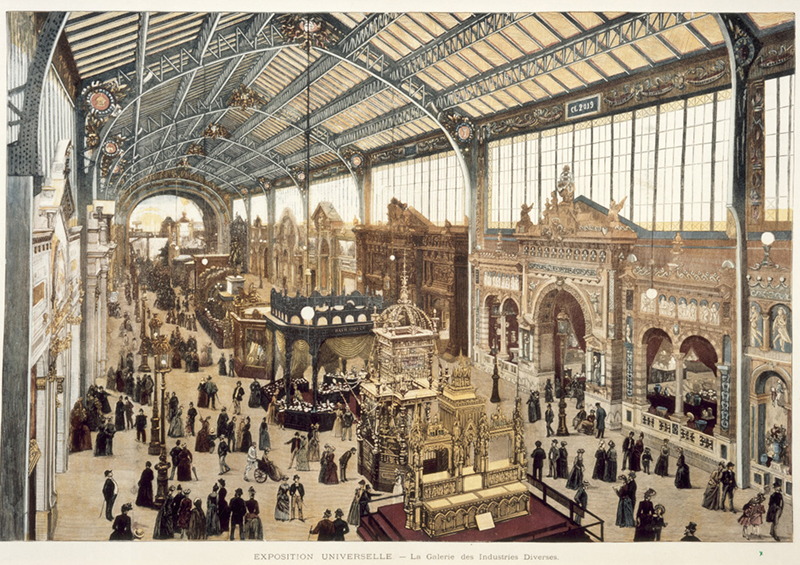
The exhibition, relating to the themes of iron and steel, is characterized by the Palais des Beaux-arts et des Arts Libéraux by Camille Formigé and the Galerie des Industries Diverses by Joseph Bouvard, renowned for its luminous dome of blue metal frame, shimmering stained glass, and ornamented multicolored terracotta center. These two tokens of bravery are found before the buildings that line the Champ de Mars. The Galerie des machines reaches unprecedented dimensions at the end of the walkway.
The imposing and revolutionary Eiffel Tower sits on the banks of the Seine, across from the Exhibition. This remains the crowning highlight as it encounters endless success and recognition, receiving more than two million visitors during the May to November Exhibition period.
In 1889, the industry accordingly asserts itself with confidence, and the metal edifices establishing a united setting triumph as they display products and bold manifestos to bear the message of faith in the era of technical progress.
You liked this article ? ? Share it
Opening times & Ticket prices
Today :
09:30 - 23:00
Price :
28.30€
Take Paris’ most spectacular ride to the top for €28.30 or less (€28.30 for adult ticket with access to top by lift).
